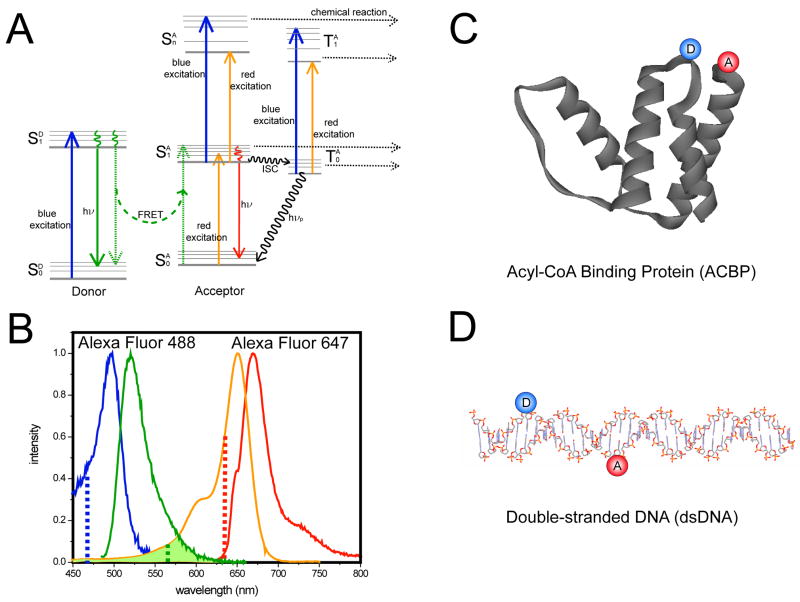Figure 1.
(A) Jablonski diagram of a donor-acceptor pair, adapted for FRET, and showing multiple possible pathways for acceptor photobleaching. The donor, upon excitation by a blue photon during the blue excitation period (upward blue arrow) reaches its first excited state and relaxes either by emitting a photon (downward solid green arrow) or by transferring its energy to the acceptor (dashed green curved arrow). The acceptor is excited from its ground state to its first excited state either by energy transfer from the donor, by a blue photon during the blue excitation period (not shown), or by a red photon during the red excitation period (upward orange arrow). The acceptor relaxes to its ground state by emitting a red photon (downward red arrow) or to its triplet state by intersystem crossing (horizontal black wavy arrow) followed by phosphorescence (downward black wavy arrow), or absorbs another blue or red photon to reach a higher excited state . The acceptor can also absorb another blue or red photon while in its triplet state, to reach a higher excited triplet state . (B) Excitation and emission spectra of Alexa Fluor 488 (blue, excitation; green, emission) and Alexa Fluor 647 (orange, excitation; red, emission). Excitation wavelengths for dm-ALEX and ns-ALEX were 467–470nm for blue (dashed blue line) and 635–640nm for red (dashed red line) respectively. The overlap between the donor’s emission and the acceptor’s absorption is highlighted by the hatched green area. (C) Structure diagram of ACBP, with the donor (Alexa Fluor 488) and acceptor (Alexa Fluor 647) labeled at position 17 and 86. (D) Schematic diagram of double-stranded DNA.

